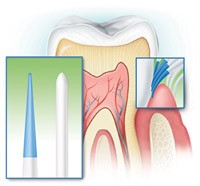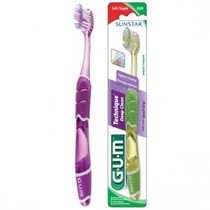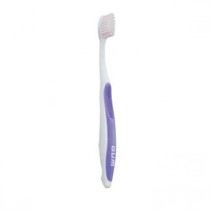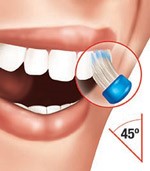Heart Condition and Oral Health
I have a heart condition and worry about my oral health.
Gum diseases have been shown to be associated with heart disease. Although this is not a cause-and-effect relationship, having gum disease does increase the risk of heart disease.

MANAGING YOUR HEART CONDITION AND ORAL HEALTH
Gum disease is an inflammatory disease in which the body reacts to the bacteria in dental plaque by the process of inflammation. Inflammation helps the body fight the bacteria and their by-products, but the chemicals produced not only act locally in the gums but also are dispersed to other parts of the body, most notably the heart via the blood stream. The chemicals can affect the walls of blood vessels and increase the chance of blood clots. For this reason, many medical and dental scientists believe that good gum health is even more important for those with known heart disease.

Figure: Chronic Inflammation is the common element between gum disease and chronic heart disease.
There is also another pathway that links the mouth and the heart. Gum disease and some other conditions and procedures can lead to microorganisms from the mouth entering the blood stream and settling in parts of the heart, resulting in a condition known as endocarditis. The conditions that put the heart most at risk of endocarditis include:
Artificial heart valves or heart valves repaired with artificial material
A history of endocarditis
A heart transplant with abnormal valve function
Certain congenital heart defects
Taking antibiotics before dental procedures that increase the risk of microorganisms entering the blood stream can lessen the risk of endocarditis. The American Heart Association has issued recommendations for antibiotic prophylaxis for these and other conditions for people undergoing certain dental procedures. Your dentist and cardiologist or physician will be able to determine if you are at risk for endocarditis and whether or not to provide antibiotic prophylaxis. Not as many conditions now require antibiotic prophylaxis.
Whether you have heart disease or have a condition that puts you at risk of endocarditis, minimizing the bacterial burden in your mouth will be beneficial to not only your oral health but your general health as well.
HERE’S WHAT TO DO FOR GOOD ORAL HEALTH
1. Get a check-up
Schedule a dental check-up and tell your dentist about your heart condition as soon as it has been diagnosed. Your dentist and dental hygienist will work with you to make sure your gum health is good and the bacterial burden from the dental plaque is minimized through professional cleanings and the proper technique for good everyday care at home.
2. Strive to have the best oral hygiene. Use the best toothbrushes.
For all teeth and gums:
Brush all teeth and gums thoroughly with a good quality toothbrush that is designed to reach into and help clean all the difficult-to-reach areas. It is here that the dental plaque builds-up – especially along the gum margin, under the gums, and between the teeth.

Figure: Toothbrushes with extremely tapered bristles can reach further under the gum and between the teeth in the hard-to-reach areas than regular “end-rounded” bristles.


Hold the brush so the bristles are pointing toward the gum margin at 45 degrees to the tooth roots and move the brush back and forth with short strokes, making sure all surfaces and sides of all teeth get brushed equally. This should take about two minutes to do well. Check with your dental hygienist for the technique that suits your mouth best.

Figure: A key feature of the Bass Technique is placing the bristles at a 45-degree angle to the tooth.
Between the teeth:
Toothbrushes are not able to clean in the hard-to-reach areas between the teeth – a place where bleeding often occurs and gum disease starts. Each day use an interdental brush to clean between each and every tooth. With the correctly designed product, this between-teeth cleaning is both very simple and very effective. Dental floss may be used in place of, or along with, an interdental brush but is typically perceived to be more difficult.
Toothpaste:
Use fluoride toothpaste twice per day, brushing with it for two minutes to gain maximum benefit of the fluoride binding to the enamel. If prone to tooth erosion, try to choose a gentle, low-abrasive paste and avoid whitening pastes that may be more abrasive to the softened tooth surface.



